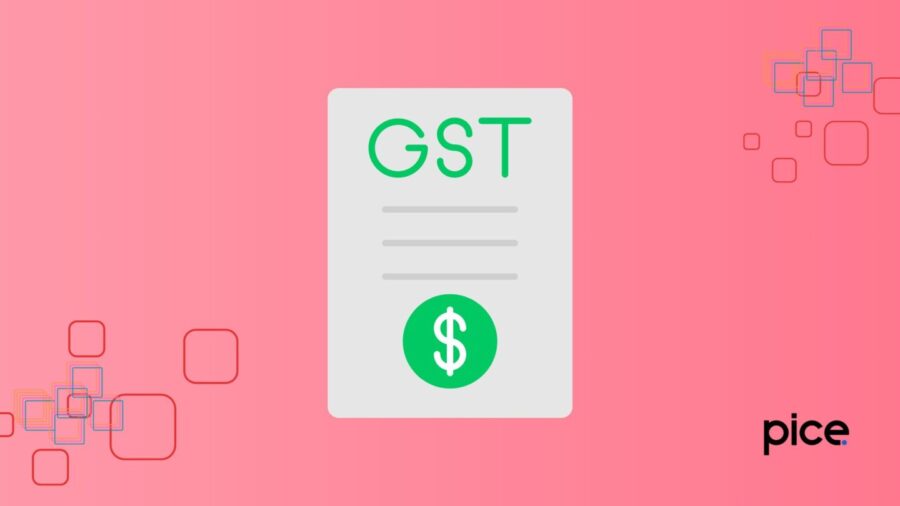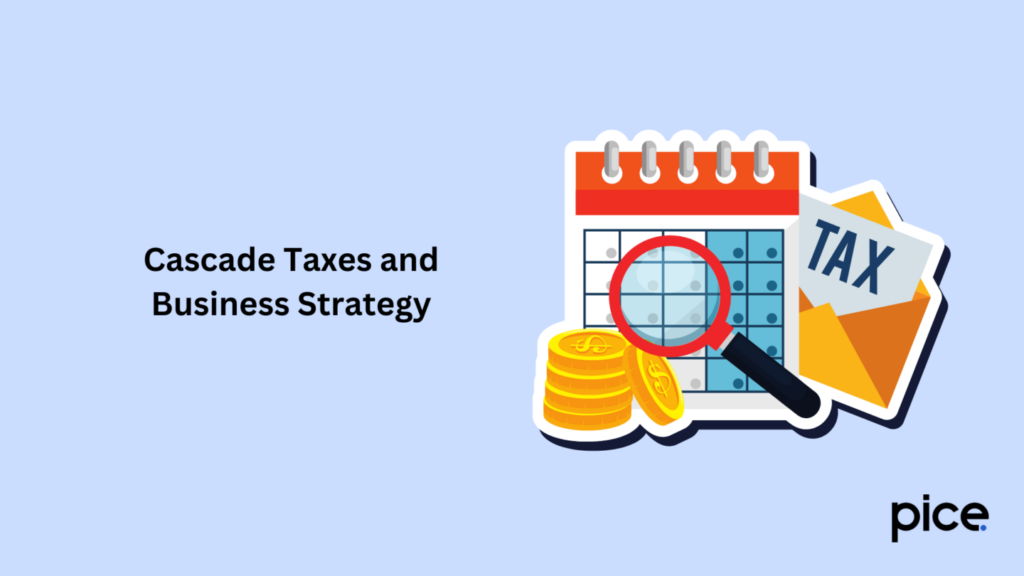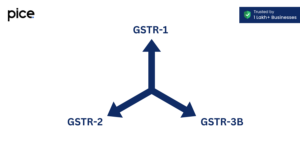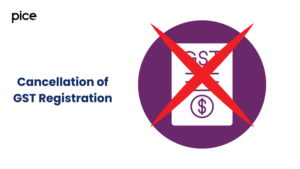Goods and Services Tax: How Cascade Tax Affects the GST System
- 20 Sep 24
- 10 mins

Goods and Services Tax: How Cascade Tax Affects the GST System
Key Takeaways
- GST eliminates the cascading tax effect, reducing the overall tax burden on consumers and businesses in India.
- Cascade tax is a 'tax on tax' system that results in higher prices for end consumers due to repetitive taxation.
- India transitioned from a complex cascade tax structure to a unified GST system, fostering a more transparent and efficient tax environment.
- Businesses can counter the effects of cascade tax by optimizing pricing strategies and supply chain management.
- The shift to GST has unlocked growth opportunities for businesses across state lines, though compliance remains crucial.
The Indian taxation system replaced the cascading effect of taxation or ‘taxation over taxes’ with the introduction of Goods and Services Tax (GST- a type of indirect taxes) under the GST Act 2017. It helps the country reduce the tax burden on consumers and businesses. Thus, it has a positive impact on consumers.
In this blog, we will walk you through a comprehensive guide on the cascading effect in GST, concept of cascade tax, its advantages, and business strategies to counter a cascade tax while highlighting the alternatives to cascading tax that India adopted in its indirect tax structure.
What Is a Cascade Tax?

A cascade or cascading tax is a repetitive sales tax that all the buyers pay in a supply chain based on the previous tax-inclusive cost. All the stages of the supply chain, from raw materials to end consumers record a levy of sales tax with cascading effect at each successive stage in a supply chain.
Understanding Cascade Tax
The cascading or compounding effect makes a cascade tax a 'tax on tax' or a 'pyramiding tax'. A product has various stages of production process in the supply chain. As the product moves in the supply chain, cascade tax applies at all stages. As a result, the end user bears the highest tax burden which is higher than the tax in any other stage.
A cascading taxation system results in inflationary prices of products. As a result, countries with a cascade tax often face challenges to stay competitive in the international markets among competitors.
Example of a Cascade Tax
Considering an example of a cascade tax can help us understand the concept. For instance, for a gift wrap business, the process initiates with trees sent to paper factories. Then the trees are processed and sheet rolls are sent to printing companies for design. The printing factory sends it to the wholesaler, who then provides it to the retailer, and finally, it reaches the end consumer.
Each stage experiences a transfer of ownership and hence is a taxable transaction cost including a sales tax. Cascade tax is charged at each stage while the consumer at the end of the supply chain bears the highest tax burden due to the tax base.
Alternatives to a Cascade Tax
Several economists criticise cascading tax as it often leads to inflationary prices of goods and distortion in resource allocation. As a result, the majority of the countries use alternative taxation methods. Here are the alternative taxation methods prevalent in India:
Value-Added Tax (VAT)
Value-added Tax is a type of consumption tax levied on the value added to goods and services. This tax is imposed at each stage of the production chain where a product exhibits value addition including raw materials to end consumers.
The tax amount that buyers pay at each stage of the supply chain depends on the product cost minus material costs in the product that had been taxed earlier. Thus, materials are essential items in the tax calculation. However, economists argue that VAT imposes an economic burden on the lower-income group in terms of income tax.
Goods and Services Tax (GST)
Goods and Service Tax is similar to VAT. However, it is charged irrespective of the value added. For the countries using the GST system, businesses are charged at each stage of the manufacturing process while the end users are charged at the point of sale.
The GST system can effectively reduce the overall taxation compared to the cascading effect present in the previous tax regime. GST has the potential to merge multiple taxes into one tax system. For instance, central tax like customs duty, central sales tax, excise duty tax and service tax followed by state-level tax such as entertainment tax, transfer tax, entry tax and luxury tax can be effectively merged into GST.
However, criticisms of GST indicate that it is a regressive taxation system that increases the tax burden on lower-income households compared to higher-income households. As a result, income inequality increases in countries exercising GST.
Advantages of Cascade Tax
Cascade tax has multiple benefits for countries as well as for businesses exercising it. Businesses in countries with cascade taxes can further reap multiple benefits. Let us take a look at such benefits.
- The administration of cascade tax is simpler compared to other tax systems. As a result, the administrative burden on tax authorities as well as on businesses gets reduced, especially in areas with limited infrastructure or resources and in the earlier stages. In the subsequent stages end users bear the compliance burden and compliance cost with cascading tax. Even though there are complex compliance procedures, the compliance requirements are seamless. This can help you avoid compliance issues and compliance challenges with simplification of tax compliance.
- In sectors where there is a consistent consumption pattern followed by inelastic demand, cascade tax ensures stability in the government's revenue collection or tax collection process across various revenue streams.
- As a cascading taxation system enhances the visibility of tax burden throughout the supply chain, it ensures transparency between businesses and consumers regarding the implications of their transactions. Thus, there is a positive impact of cascade tax chain or cascade tax environment.
- Cascade tax has the potential to protect domestic industries as it renders imported goods more expensive compared to domestically manufactured goods. This leads to job creation opportunities within the economy and supports local businesses.
- This taxation system creates fewer opportunities for tax evasion compared to other tax systems with tax rates that facilitate self-reporting or claiming input tax credits and with proper documentation of processes.
While this approach offers notable benefits, it also brings certain challenges. One of the key drawbacks of cascade tax in GST is the added financial strain it places on consumers.
Cascade Taxes and Business Strategy

Consequences of cascade tax need to be understood by businesses to reduce the tax burden. Aligned with the taxation system, businesses need to consider the following strategies to avoid higher tax burdens:
- Businesses need to adjust the level of domestic production, pricing strategies and sourcing decisions to ensure higher profit margins despite a cascading tax structure.
- The strategic pricing strategy can include ways to pass on the additional costs to consumers to reduce the tax burden. On the other hand, businesses can also raise prices for consumers to pass on the tax burden. Finished product bundling or discounts on product prices can be other options to reduce the tax burden of businesses.
- Businesses can optimise supply chain management strategies through vertical integration by consolidating product processes.
- As a business, you should select suppliers and distributors strategically aligned with the tax jurisdictions to reduce the tax burden.
What Is a Consumption Tax?
Consumption tax applies to the purchase of goods and services. It is a flat rate on a transaction or a percentage of VAT. Both GST and VAT are considered consumption tax in the transparent tax regime.
India's Efforts to Remove Cascading Effect
India has eliminated the cascade taxation structure by replacing it with a unified taxation system - GST. It is a type of indirect tax on goods and services prevailing in India and is levied at each point in a supply chain. Further, each participant in the supply chain is liable for the Input Tax Credit claims on purchased goods and services, thereby reducing the tax liability.
The current tax structure has unlocked new opportunities for businesses to grow across state lines, fostering a unified market and slashing logistics costs. However, businesses must now ensure strict compliance with GST regulations to avoid penalties and legal issues.
Conclusion
India replaced the cascading and complex tax structure by imposing GST on goods and services purchased. This change has significantly reduced the tax burden on businesses and end users by eliminating the effects of cascade tax on Indian products.
The transition from sales tax to VAT and ultimately to GST marks a significant improvement in the country's tax structure. Furthermore, businesses can still adopt effective pricing strategies and product bundling methods which are key aspects of business functioning to manage and mitigate any residual cascading effects that leads to an impact on businesses. Further, the future of cascade tax in India can contribute to reduced tax burdens through GST.
💡If you want to pay your GST with Credit Card, then download Pice Business Payment App. Pice is the one stop app for paying all your business expenses.
 By
By 

















